Japan Travel: Meiji Shrine
The Meiji Era
The Meiji Period (明治 時代 Meiji jidai, “period of the illuminated kingdom”) is one of Japan’s most famous historical moments. It expands from October 23, 1868 until July 30, 1912 and includes the 44-year reign of Emperor Matsuhito.

photo credit: Wikipedia
Following the fall of the Tokugawa Yoshinobu shōgunate, the era of Emperor Meiji, the first with political power, began. It is precisely during these years that the political, social and economic structure of Japan began to change based on the Western model.
Following the death of Tokugawa Ieyasu in 1866, Tokugawa Yoshinobu was named as his successor, remaining in power a few months, until November 1867, when the shōgun submitted his resignation and ceded his powers to the court. In January 1868, Tokugawa’s troops were replaced in Kyoto by a coup. And it is precisely in this period that the Meiji Restoration begins, restoring power to the emperor after centuries of shogun’s rule.

photo credit: Wikipedia
The first action exercised by the new Meiji government was to give some more privileges to the samurai class, which remained dissatisfied with the previous regime. Following the numerous contrasts in 1869 the daimyō were appointed governors of their feuds. However, the latter were suppressed in 1871, allowing the “formal” centralization of power and the reinforcement of the imperial institution. Not everyone agreed to the renunciation of their feuds, but to maintain order and stability, the government persuaded the daimyō with promises of strong rewards.
Along with this compromise, the government also compromised with the samurai class, approving a law that allowed them to carry out any occupation in the business field and public administration (the most popular were the institutional police body and the imperial army) . As a result of this, the maintenance of the samurai class was taken over by the central government, also by giving the remuneration.
In this new state, the image of the emperor became more and more significant and in June 1869, with the “oath of the Charter” in favor of the emperor Meiji, the first constitution was born. Here the full powers of the central government were enunciated, even if the political decisions of the country were still entrusted to an oligarchic government.
Until 1881, the regime governed in an authoritarian way with no opposition from the ruling class, but it is in this year that a great crisis broke out. Here, with a request to the emperor, he invoked the desire to transform the government into a parliamentary form.

photo credit: Wikipedia
Despite the difficulties, the Meiji period remains one of the most important eras and one with more changes in Japanese history. It is here that the foundations were laid for today’s government of the Land of the Rising Sun.
The Meiji temple
Located in the heart of Tokyo and surrounded by a natural and urban forest, the Meiji-Jingu is a pearl of Shintōism and one of the city’s most symbolic sanctuaries.


Located in the Yoyogi park, in Shibuya, the structure was completed in 1920, in honor of Emperor Meiji (1852 – 1912) and his wife Shôen (1849 – 1914). The shrine was also the victim of the bombings during the Second World War, but rebuilt completely soon after. This is a great demonstration of Japanese gratitude to this emperor, and the most striking example is the huge park that surrounds this place of worship, with more than one hundred thousand trees sent by the inhabitants of the archipelago in honor of the memory of this emperor.
To access the sanctuary, still in activity, you have to cross the large surrounding forest and pass under the magnificent Torii in cypress. Before you can enter the courtyards and sacred buildings, you must respect some rules of etiquette, such as the purification of the body with water and the greeting to the Torii.

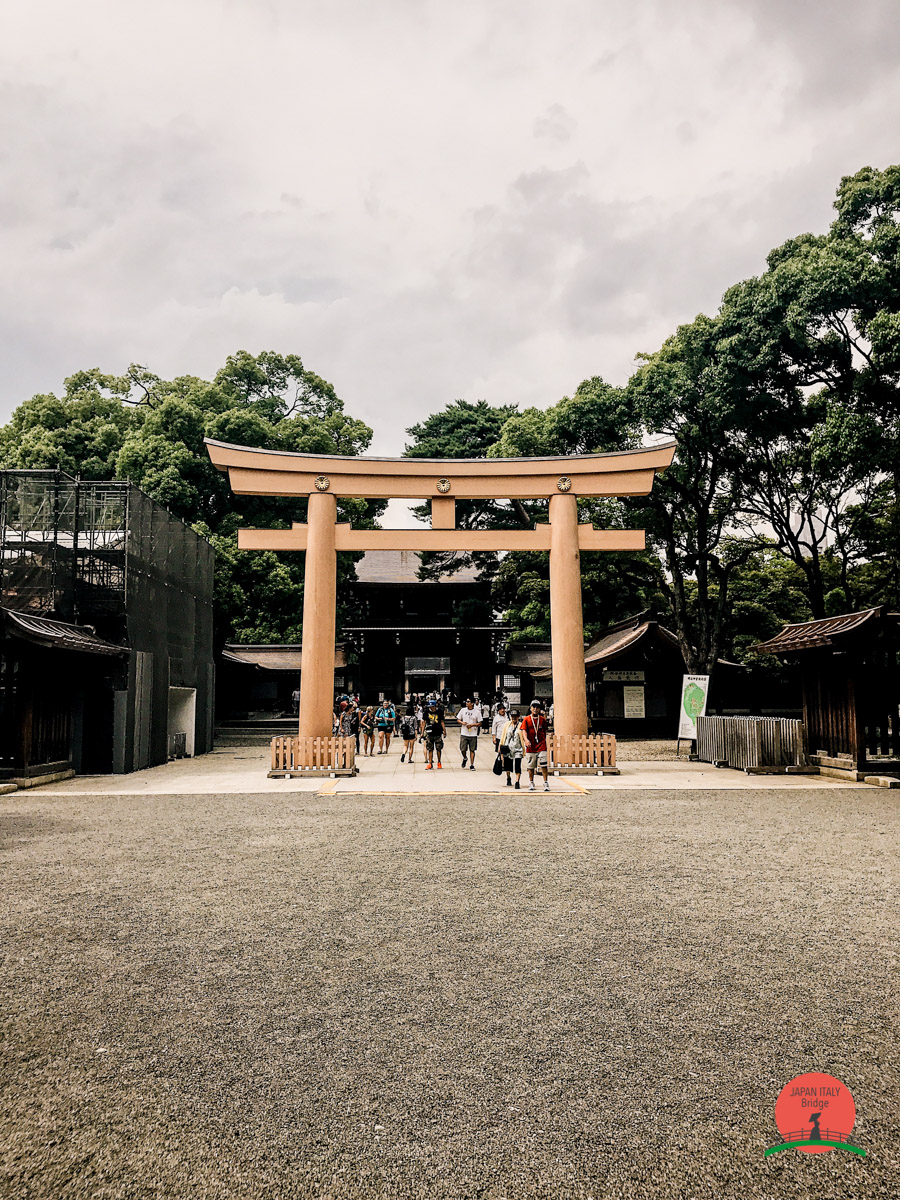
It’s amazing how after passing the big Torii gate, Tokyo’s noisy comings and goings are replaced by the quiet sounds of the forest and the thick foliage of trees. Here temple visitors can take part in typical shinto activities, such as offerings in the main area, buying goodies and amulets, or writing your own wishes on the famous ema tablets. It is not rare, in fact, to find people of all ages who buy these wooden tablets and express their desire by writing on these supports. Once you have expressed your wish, you can hang the ema on a central support in the temple and subsequently they will be recovered by the priests who will then send messages to the Kami (gods).
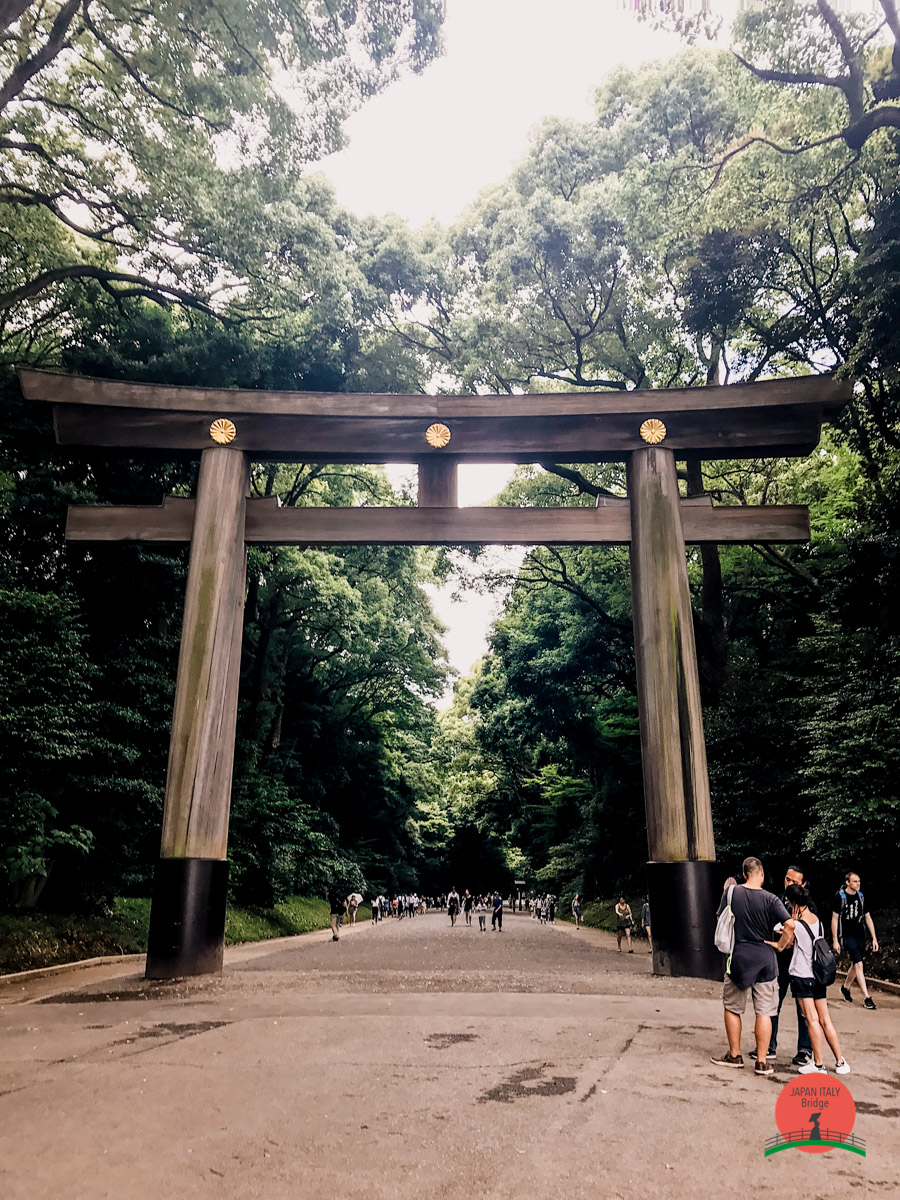
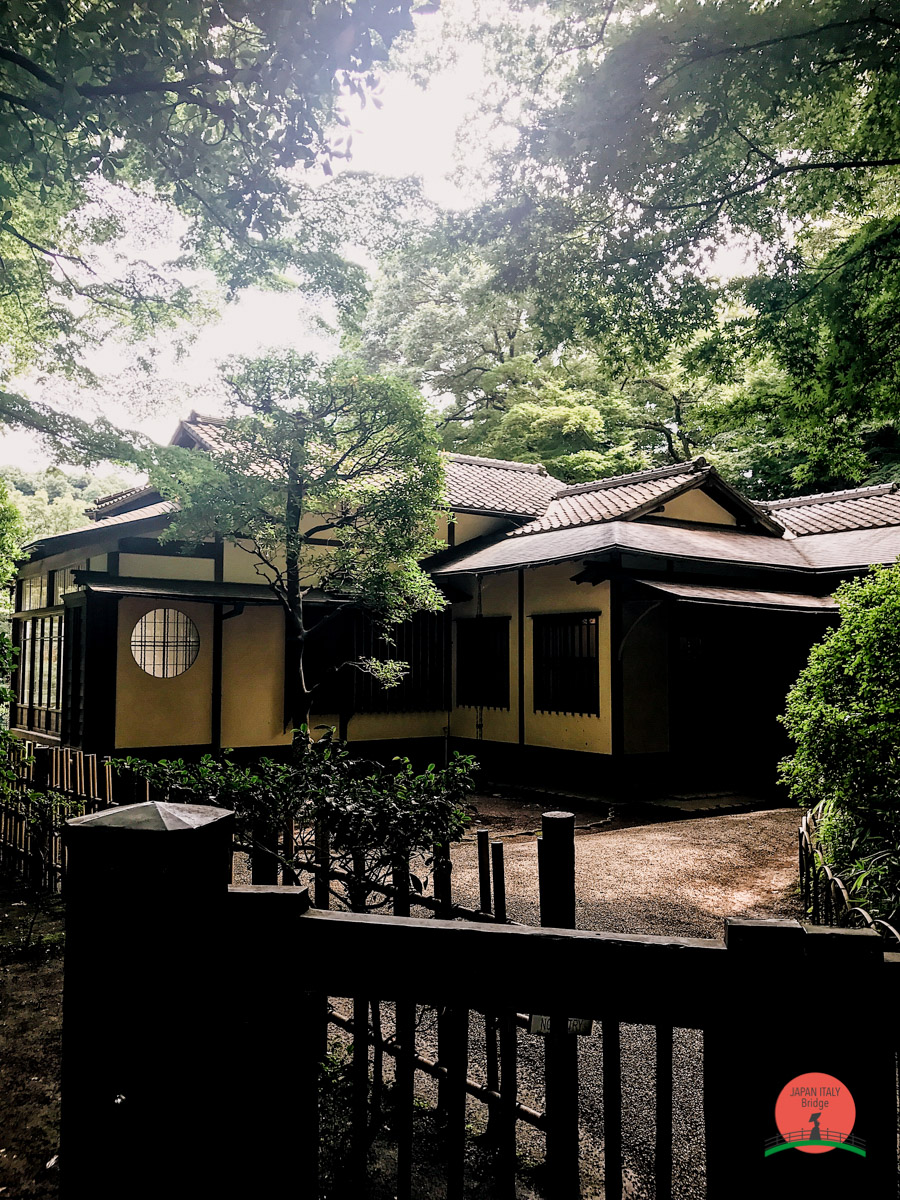
The Meiji Jingu is one of the most popular temples in Japan and at this time of year, just after the Omisoka, it regularly welcomes more than three million visitors for the Hatsumode, the first prayers of the year.
In the northernmost part of the temple-related lands, visitors can find the treasure house of the Meiji Jingu, built a year after the temple was opened. In this place are contained many personal objects related to the Emperor and the Empress, including the carriage that accompanied the emperor to the formal declaration of the Meiji constitution in 1889.


A large area of the southern part of the temple lands is occupied by the Interior Gardens, which require a small entry fee. These gardens are particularly popular in mid-June to admire the blooming of the Iris flowers in all their glory, together with the famous Japanese gruidae birds. And if you have enough patience, you might have the opportunity to see a small flock of these fantastic birds cross the lake, a unique and magical spectacle.
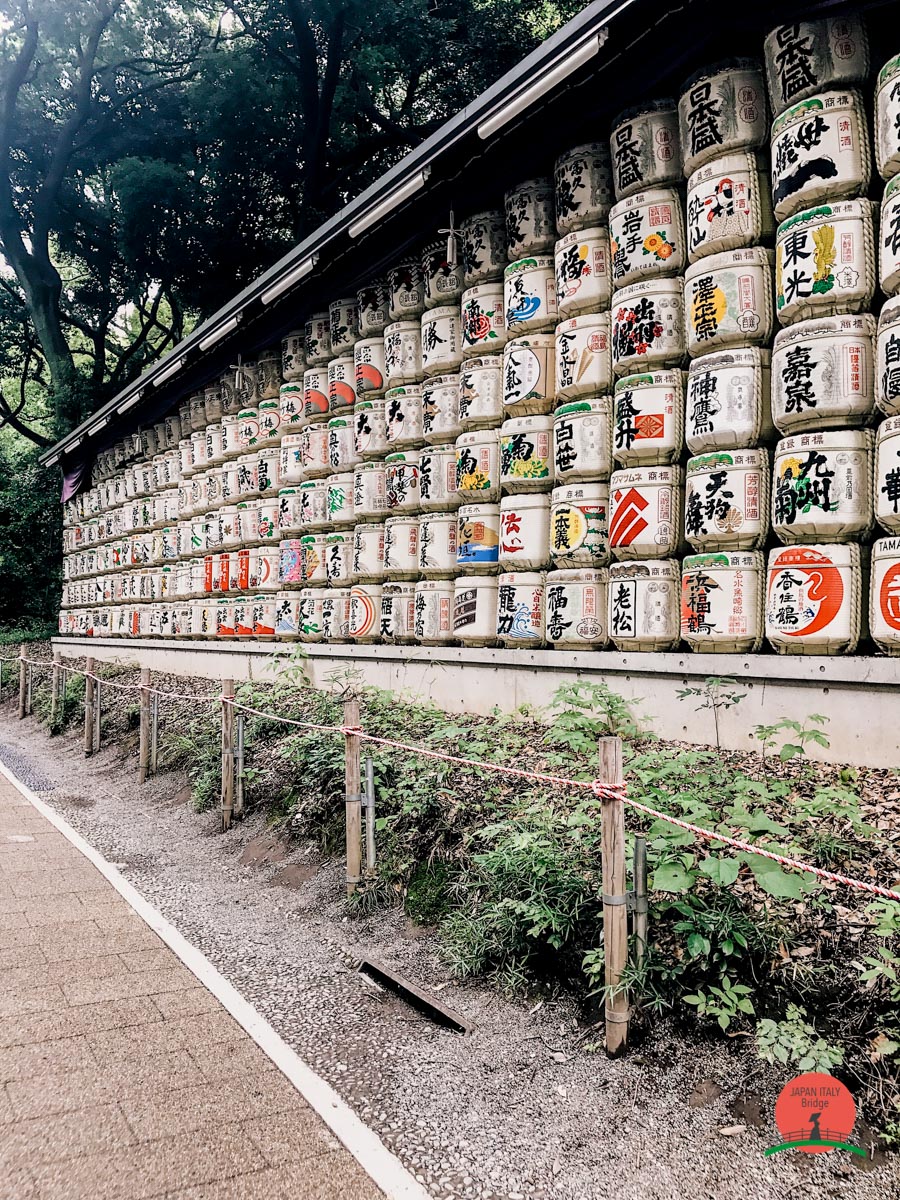
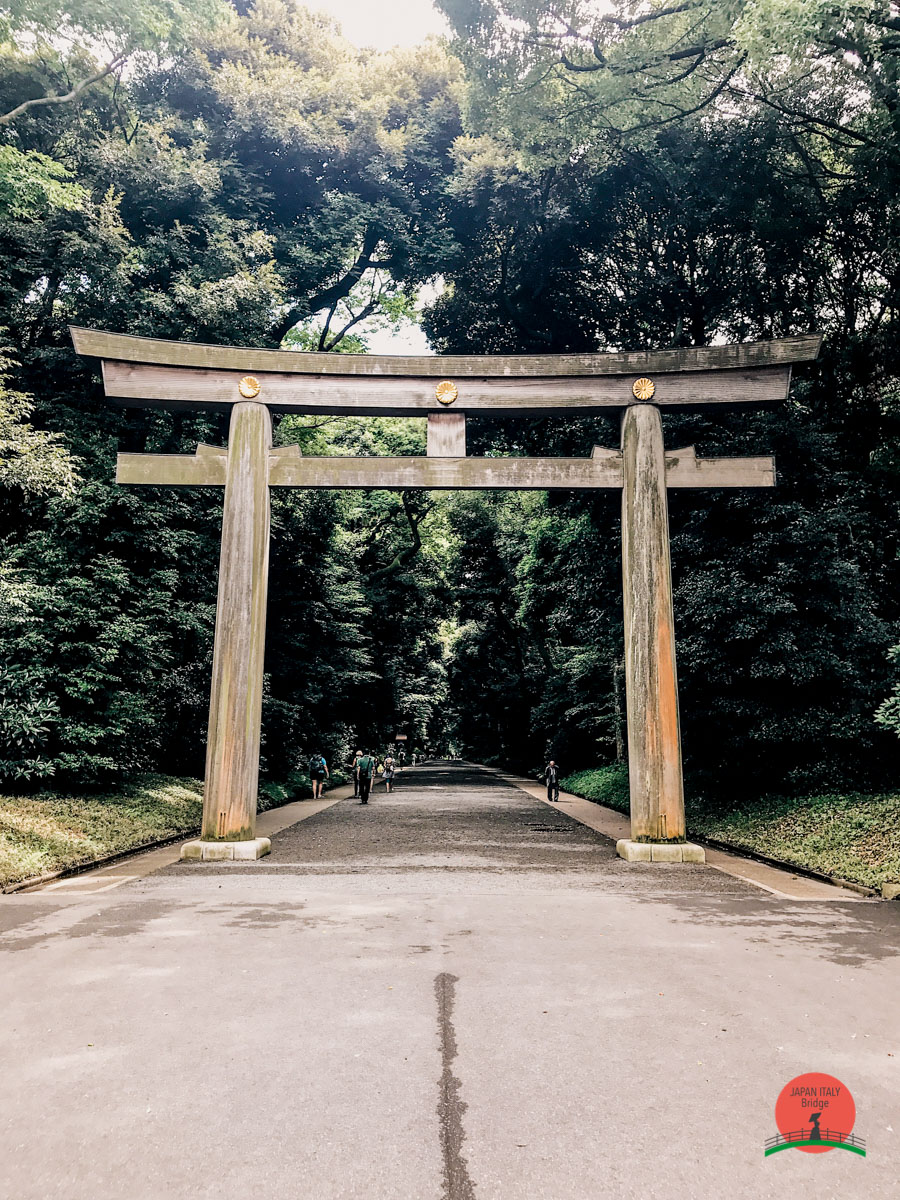
Also, walking along the inner streets of the temple and the park, you can come across what I call “wall of sake”, a wall of gigantic sake barrels, a gift for the emperor by all the sakagura of Japan . Opposite this wall, on the other hand, it is possible to find a wall of wine barrels, a gift to the emperor from all the foreign nations.
Also, in preparation for the 100th anniversary in 2020, renovations are taking place for some of the temple buildings, scheduled until October 2019, so if you plan to visit Tokyo in 2020 you can not miss this goal, between an Olympic race and the other!
Share this:
- Click to share on Facebook (Opens in new window)
- Click to share on Twitter (Opens in new window)
- Click to share on Tumblr (Opens in new window)
- Click to share on Pinterest (Opens in new window)
- Click to share on Telegram (Opens in new window)
- Click to share on WhatsApp (Opens in new window)
- Click to share on Reddit (Opens in new window)
- Click to print (Opens in new window)






